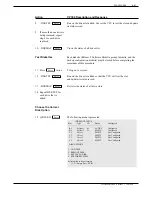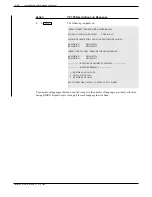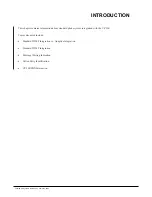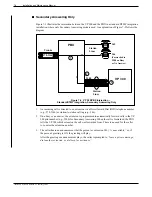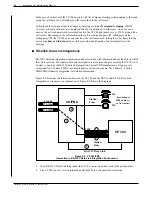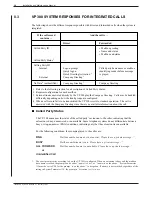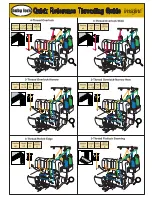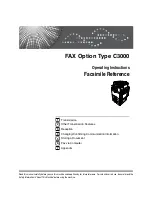
STANDARD DTMF INTEGRATION
The standard connection between the VP 300 and PBX phone system is a 2500-type single line extension.
VP 300 Line Interface Cards (LIC) accept a series of PBX single lines. By emulating the touchtone
telephone sets the PBX is expecting, the VP 300 performs all the operations that are normally possible
from a single-line phone — receiving calls, taking messages, transferring calls, and initiating PBX
functions by dialing DTMF digits or codes.
Standard DTMF Integration depends on the PBX's capabilities and uses only standard Toshiba VP System
features. Only PBX call record information delivered as DTMF signals can be processed by a system
utilizing Standard DTMF Integration. After an incoming call has had the initial called party's ID processed,
the VP 300 reverts to standard operation.
■
Message Waiting Indication (MWI)
A system using Standard DTMF Integration may use PBX message waiting indicators if a 2500-type
extension can dial a code to perform the function. Typically, the message waiting indicator is a lamp
on the telephone set or a distinctive stutter dial tone provided when the telephone receiver is off-hook.
The following system parameters allow the entry of DTMF digit codes to allow the VP 300 to turn
MWI ON and OFF.
NOTE:
MWI (lamp or stutter dial tone) is
not available to 2500-type extension users or STRATA systems.
Message waiting notification is accomplished by ringing the 2500-type extension user.
System 79 — LAMP MW: “ON” PRE-EXTENSION DIGITS
System 80 — LAMP MW: “ON” POST-EXTENSION DIGITS
System 81 — LAMP MW: “OFF” PRE-EXTENSION DIGITS
System 82 — LAMP MW: “OFF” POST-EXTENSION DIGITS
All possibilities for code digits to precede or follow the desired mailbox are allowed. Code entries that
are not applicable may be left blank.
■
Called Party Identification (CPI)
Certain phone systems provide the extension number of the called party when forwarding calls to the
VP 300. When this information is provided in DTMF tones preceding the forwarded call, the VP 300
can process the call as if a caller had dialed the called extension. A standard integrated VP 300 can be
configured to accept these forwarded calls in CX or MX mode. The call is extended to the called
person's mailbox, and the caller hears the called person's greeting and may leave a private voice
message. In this form of integration, the caller is not required to reenter the called person's extension
as would normally be the case in CX or MX mode.
Toshiba VP Systems Release 6.1 February, 1993
7-2
Installation and Maintenance Manual
7.2
Summary of Contents for VP 300
Page 2: ......
Page 10: ......
Page 14: ......
Page 20: ...Toshiba VP Systems Release 7 1 July 1994 ...
Page 52: ...Toshiba VP Systems Release 6 1 February 1993 2 14 Installation and Maintenance Manual ...
Page 56: ...Toshiba VP Systems Release 7 1 July 1994 ...
Page 146: ......
Page 312: ...Toshiba VP Systems Release 7 1 July 1994 ...
Page 314: ......
Page 444: ......
Page 496: ......
Page 542: ......
Page 598: ...Toshiba VP Systems Release 6 1 February 1993 ...
Page 600: ...Toshiba VP Systems Release 6 1 February 1993 ...


